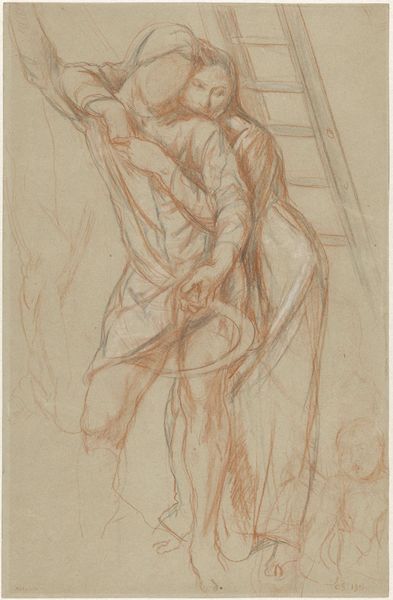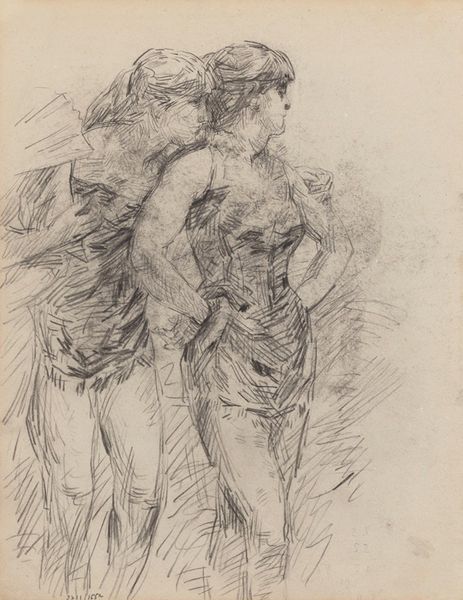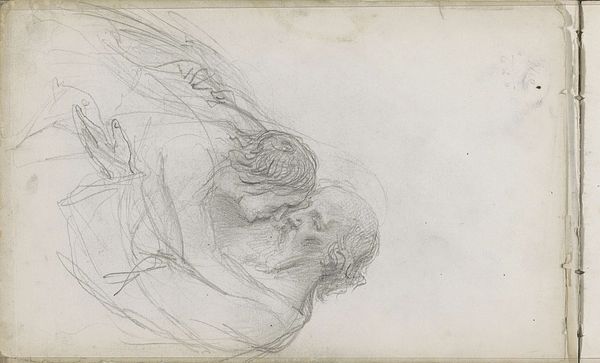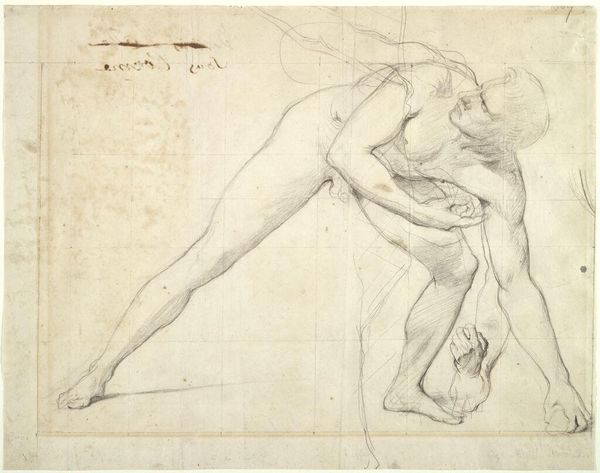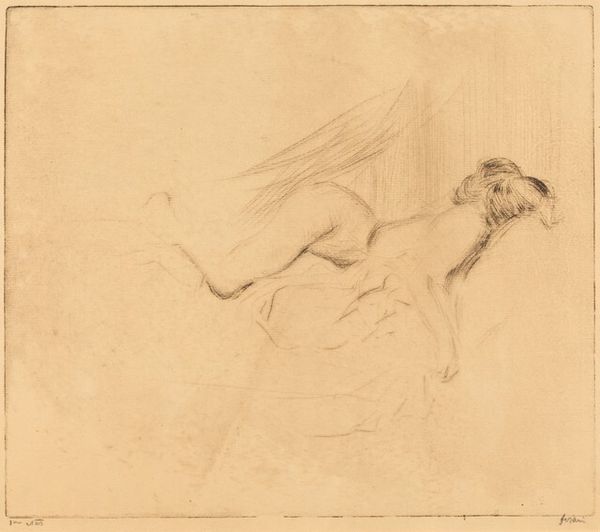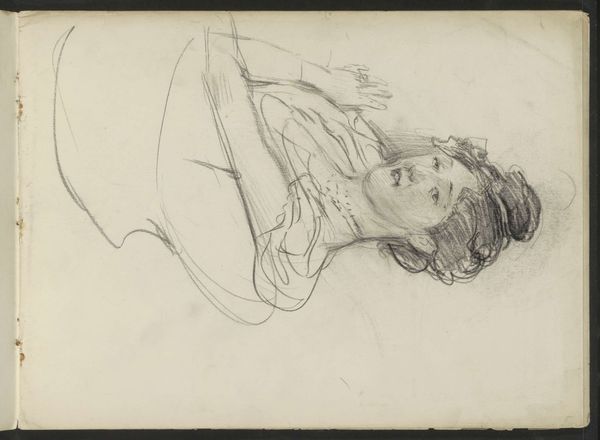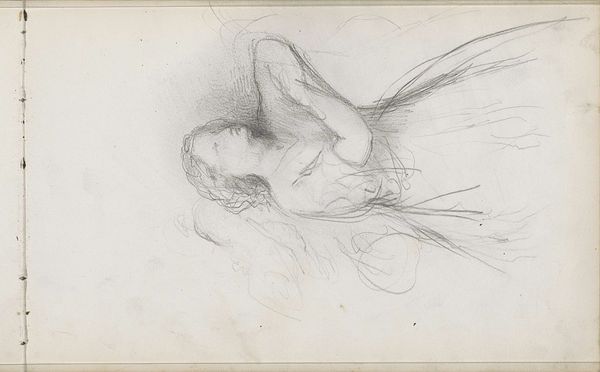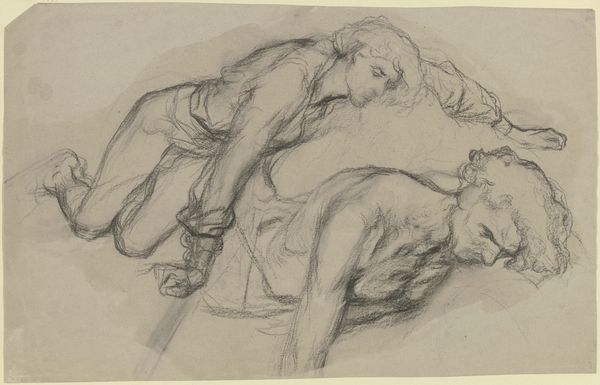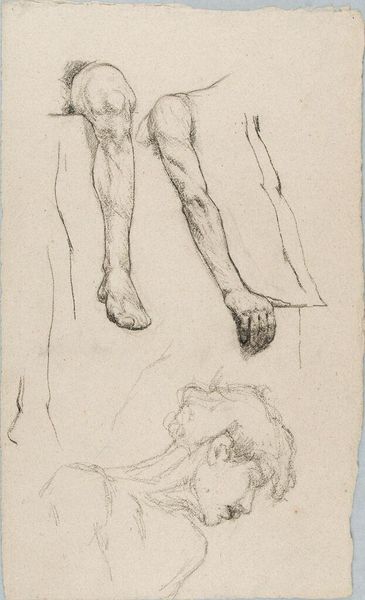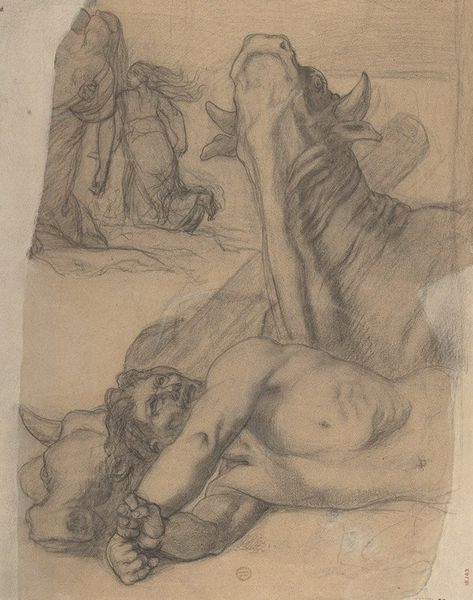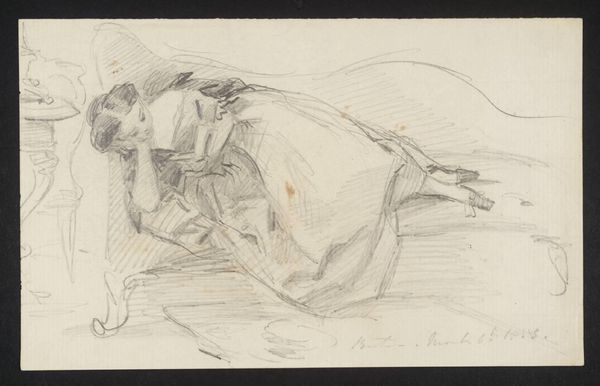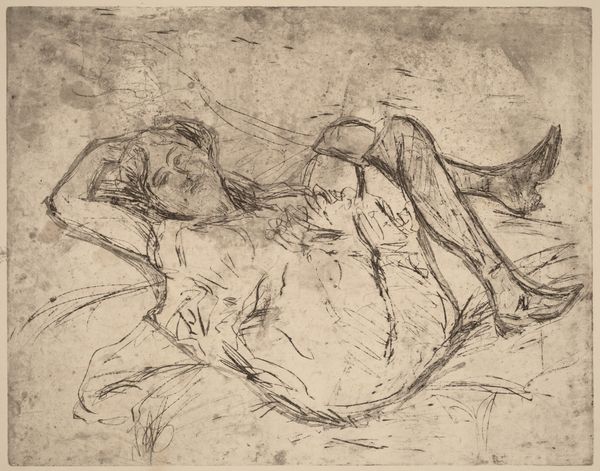
Copyright: Public Domain: Artvee
Curator: The overwhelming sense I get looking at this is one of profound anxiety, even terror, wouldn’t you say? There's something intensely unsettling about the suspended figures. Editor: Yes, definitely. Winslow Homer created this powerful drawing, “Study for ‘The Life Line’," between 1882 and 1883. It’s rendered in pencil and charcoal. Curator: The grayscale palette just amplifies the drama. The softness of the pencil work combined with the stark charcoal outlines—it feels like a memory, something just beyond our grasp. It feels as though it captures an important, yet terrible truth about humans and what we endure for survival. Editor: The drawing is a study for Homer’s famous painting, “The Life Line.” It depicts a dramatic rescue at sea, focusing on the precarious moment of transfer from the rescue boat to shore via a breeches buoy. You see the limp, seemingly unconscious, figure of a woman. And she is being secured by a muscular, faceless man who appears to be the brave lifeguard, although you can't really see the protector. Curator: Faceless indeed! And isn't that just brilliant? Homer removes the individuality of the rescuer, turning him into this universal symbol of…duty, maybe? Or perhaps he simply felt that her vulnerability and struggle was simply more pertinent. I love how the darkness kind of bleeds from his form and wraps around her as if he is protecting her still, no matter how bad it may look at first. Editor: It certainly amplifies the sense of universal suffering. Homer’s work often grapples with the power and brutality of nature and the resilience of humanity, especially during a time of increasing industrialization and social change in America. It asks the viewer to really look, with intensity and thought. Curator: He captured a scene of heroic struggle, while hinting at the fragility of life in a tumultuous world, not a small accomplishment for what is just a drawing. What starts out as dark has undertones of such tenderness that makes the viewer truly pause, consider, and perhaps hope. Editor: Precisely, a piece born from a specific event, but somehow it speaks to something timeless and elemental within us all. The kind of scene you witness and never forget.
Comments
No comments
Be the first to comment and join the conversation on the ultimate creative platform.
